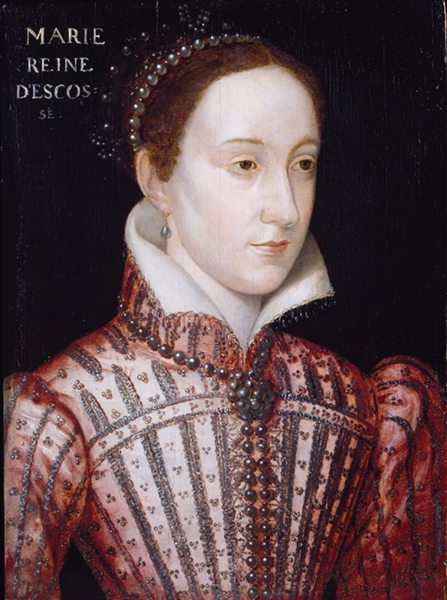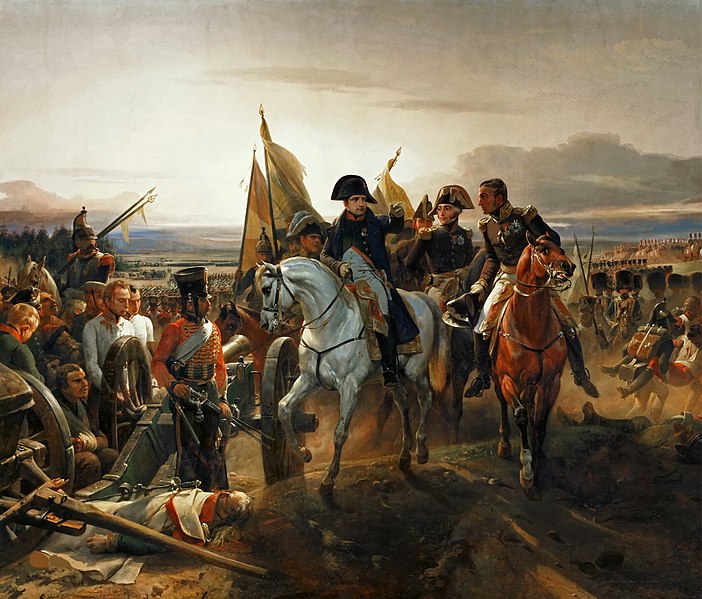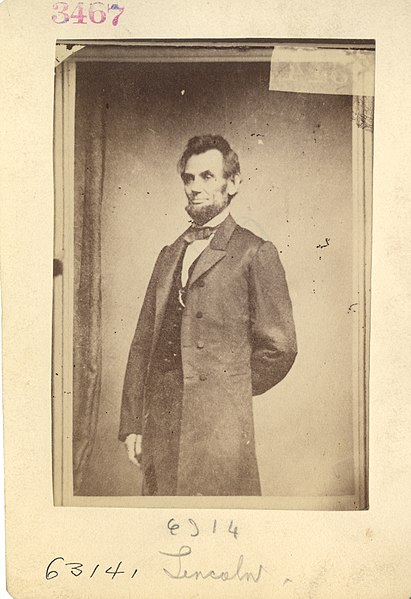February 1st stands as a testament to the complexity and depth of human history, marked by events that span the spectrums of innovation, tragedy, and transformation.
From the crowning of kings to the birth of nations, the advancements in culture, and the strides toward social justice, this day encapsulates moments that have not only defined the course of individual countries but have also influenced the global community.
As we delve into the significant occurrences that have taken place on this day, we embark on a journey through time, exploring the actions and decisions that have contributed to the world as we know it today.
Each event, whether a catalyst for change or a moment of reflection, offers insights into the enduring spirit of humanity to evolve, adapt, and aspire towards a future replete with possibilities.
February 1st Events in History
1327 – Edward III becomes King of England
On February 1, 1327, Edward III was crowned King of England, succeeding his father, Edward II. Edward III’s reign is noted for his military success and for restoring royal authority after the disastrous reign of his father.
Also Read: February 2nd Events in History
His reign saw significant developments in legislation and government—in particular, the evolution of the English parliament—as well as the devastation of the Black Death. He declared himself rightful heir to the French throne in 1337, which started the Hundred Years’ War between England and France.
Edward was known for his transformations of the English military and the legal system, and his period saw vital developments in architecture and education.
1411 – The First Peace of Thorn is signed in Thorn, Monastic State of the Teutonic Knights (modern-day Toruń, Poland)
The First Peace of Thorn was signed on February 1, 1411, in the city of Thorn (Toruń), located in the Monastic State of the Teutonic Knights (in modern-day Poland).
This treaty concluded the Polish–Lithuanian–Teutonic War in which the Kingdom of Poland and the Grand Duchy of Lithuania fought the Teutonic Knights over control of Gdańsk (Danzig) and other territories.
Also Read: January 31 – On this Day in History
The peace treaty did not lead to lasting peace, but it temporarily halted hostilities. It imposed heavy reparations on the Teutonic Order, which contributed to the Order’s financial decline and the eventual secularization of its state by the Prussian Homage in 1525.

1587 – Queen Elizabeth I of England signs the death warrant for Mary, Queen of Scots
On February 1, 1587, Queen Elizabeth I of England reluctantly signed the death warrant of Mary, Queen of Scots. Mary, a Catholic monarch, was Elizabeth’s cousin and considered by many Catholics as the legitimate sovereign of England.
Mary’s presence in England was a focal point for Catholic plotting and rebellion, which, coupled with her involvement in various plots to assassinate Elizabeth and restore Catholicism, led to her 19-year imprisonment.
Mary’s execution on February 8, 1587, was a significant moment in English history, further entrenching the Protestant Reformation in England and exacerbating tensions with Catholic European powers.
1662 – The Chinese general Koxinga seizes the island of Taiwan after a nine-month siege
Zheng Chenggong, known as Koxinga, was a Ming loyalist who fought against the Qing dynasty’s conquest of China. On February 1, 1662, after a prolonged siege, Koxinga captured Fort Zeelandia and expelled the Dutch East India Company from Taiwan, taking control of the island.
Koxinga intended to use Taiwan as a base for launching operations to restore the Ming dynasty on the Chinese mainland. His rule over Taiwan laid the foundation for the island’s Han Chinese settlement and significantly influenced its demographic and cultural development.
1793 – France declares war on the United Kingdom and the Netherlands
On February 1, 1793, the French Revolutionary government declared war on the Kingdom of Great Britain and the Dutch Republic. This marked the start of a series of military conflicts that would become part of the larger coalition wars against revolutionary France.
The declaration of war expanded the scope of the French Revolutionary Wars, already underway since 1792, and set the stage for the Napoleonic Wars.
France’s revolutionary ideals and territorial ambitions threatened the balance of power in Europe, leading to widespread conflict that would last until the defeat of Napoleon in 1815.

1814 – Mayon in the Philippines erupts; it’s the most active volcano in the Philippines
The Mayon Volcano, located in the province of Albay in the Philippines, is known for its almost perfect cone shape and is one of the most active volcanoes in the country. Its eruption in 1814 was one of its most destructive, occurring on February 1.
Lava flows buried entire towns, and the eruption caused significant loss of life and property. The town of Cagsawa was among those devastated, with only the belfry of the Cagsawa Church remaining visible above the lava flows.
This eruption remains one of the deadliest in Philippine history, illustrating the destructive power of nature and shaping local history and consciousness.
1861 – American Civil War: Texas secedes from the United States
On February 1, 1861, Texas declared its secession from the United States, becoming the seventh state to join the Confederacy in the lead-up to the American Civil War. The decision followed a state convention in which delegates voted to dissolve the bond between Texas and the United States.
The secession was motivated by issues surrounding states’ rights, slavery, and sectionalism. Texas’s secession played a significant role in the escalation of tensions that ultimately led to the Civil War, a conflict that profoundly affected the social, economic, and political landscape of the United States.
1865 – President Abraham Lincoln signs the Thirteenth Amendment to the United States Constitution
The Thirteenth Amendment, which formally abolished slavery in the United States, was signed by President Abraham Lincoln on February 1, 1865, though it was not ratified by the necessary number of states until December 6, 1865.
Lincoln’s signature was symbolic, as the President does not play a formal role in the amendment process according to the Constitution. However, his support was crucial to its passage.
The amendment marked a significant legal and moral change in American society, formally ending the institution of slavery, which had been a central issue leading to the Civil War.

1884 – The first volume of the Oxford English Dictionary, A-Ant, is published
On February 1, 1884, the first volume of the Oxford English Dictionary (OED), covering words from A to Ant, was published. The OED was an unprecedented project aimed at compiling a comprehensive and historical dictionary of the English language, detailing the meaning, history, and pronunciation of English words from the Early Middle English period onwards.
The project was initiated by the Philological Society of London and was an enormous scholarly endeavor that involved the collection and organization of millions of quotations illustrating the usage of words. The complete dictionary was not finished until 1928, reflecting the vast scope and the detailed scholarly work required.
1896 – The opera “La Bohème” premieres in Turin, Italy
Giacomo Puccini’s “La Bohème” premiered on February 1, 1896, at the Teatro Regio in Turin, Italy, conducted by a young Arturo Toscanini. Based on Henri Murger’s novel “Scènes de la vie de bohème,” the opera portrays the lives of struggling bohemians in Paris in the 1830s.
Despite a lukewarm initial reception, “La Bohème” quickly became one of the most beloved operas in the repertoire, celebrated for its beautiful melodies, emotional depth, and the vivid portrayal of its characters. Its themes of love, poverty, and the fragility of life resonate with audiences worldwide, making it one of the most frequently performed operas today.
1908 – King Carlos I of Portugal and his son, Prince Luis Filipe, are killed in Terreiro do Paco, Lisbon
On February 1, 1908, King Carlos I of Portugal and his eldest son, Prince Luis Filipe, were assassinated in the Terreiro do Paço in Lisbon. This tragic event is often seen as a precursor to the fall of the Portuguese monarchy.
As they returned from a family retreat in the palace of Vila Viçosa to Lisbon, their carriage was attacked by two republican activists armed with carbines. The king died immediately, and his heir, Luis Filipe, was mortally wounded and died shortly after.
The younger son, Manuel, was hit in the arm but survived and became King Manuel II, the last king of Portugal before the republic was established in 1910.
1918 – Russia adopts the Gregorian calendar
In 1918, following the October Revolution, the newly established Bolshevik government in Russia decreed the adoption of the Gregorian calendar, aligning with the calendar system used by the majority of the western world.
Until then, Russia had used the Julian calendar, which was 13 days behind the Gregorian by the 20th century. The change was part of broader efforts to modernize and secularize the country under communist rule.
The adoption took place on February 14, 1918, by the Western counting, which was February 1 in the old Julian calendar. This change meant that the date jumped directly from January 31 to February 14, eliminating February 1–13, 1918, from Russian history.
1920 – The Royal Canadian Mounted Police begins operations
The Royal Canadian Mounted Police (RCMP), known for its distinctive red serge uniform and as a symbol of Canadian sovereignty and tradition, officially began operations on February 1, 1920.
This national police force was formed by the merger of the Royal Northwest Mounted Police (RNWMP), established in 1873 to bring law and order to the then-western frontier, and the Dominion Police, the federal police force in the east.
The RCMP was tasked with enforcing federal laws throughout Canada, playing a key role in the development of the nation by ensuring peace and order across its vast territories.
1946 – Trygve Lie of Norway is picked to be the first United Nations Secretary-General
On February 1, 1946, Trygve Lie of Norway was selected as the first Secretary-General of the United Nations, an organization that had been founded just a year earlier in 1945, following the end of World War II.
The appointment of Lie, a Norwegian politician and diplomat, marked the beginning of the UN’s efforts to foster international cooperation and prevent future conflicts. Lie’s tenure, which lasted until 1952, was challenged by the onset of the Cold War, which often paralyzed the Security Council and complicated international peacekeeping efforts.
Despite these challenges, Lie worked towards the decolonization process and the development of UN mediation capabilities.
1953 – The North Sea flood of 1953 kills thousands in the Netherlands and Britain
The North Sea flood of 1953 was one of the most devastating natural disasters of the 20th century in Europe, occurring on the night of January 31 to February 1, 1953.
A powerful storm caused a surge that overwhelmed sea defenses in the Netherlands, eastern England, and Belgium. In the Netherlands, the flood was catastrophic, breaching dikes in over 500 locations and flooding 9% of Dutch farmland. More than 1,800 people lost their lives, and tens of thousands were evacuated.
In Britain, over 300 people died, and extensive property damage occurred along the eastern coast. The disaster prompted major investments in flood defense systems, such as the Netherlands’ Delta Works and the UK’s Thames Barrier, to prevent such tragedies in the future.
1958 – Egypt and Syria merge to form the United Arab Republic
On February 1, 1958, Egypt and Syria united to form the United Arab Republic (UAR), a political attempt to create a single Arab state. Led by Egyptian President Gamal Abdel Nasser, the UAR emerged as part of the wider Arab nationalist movement, advocating for pan-Arabism—the idea of political, economic, and cultural unity among the Arab countries.
Although the union was seen as a groundbreaking step towards Arab unity, it was short-lived due to political differences, economic issues, and Syrian discontent with Egyptian dominance.
The union officially dissolved in 1961 when Syria seceded, though Egypt continued to use the name United Arab Republic until 1971.
1960 – Four black students stage the first of the Greensboro sit-ins at a lunch counter in Greensboro, North Carolina
On February 1, 1960, a pivotal moment in the American civil rights movement occurred when four African American college students—Ezell Blair Jr., David Richmond, Franklin McCain, and Joseph McNeil—sat down at a “whites-only” lunch counter inside the Woolworth’s store in Greensboro, North Carolina, and politely asked for service.
Their request was refused, and they were asked to leave, but they remained seated in protest. This act of nonviolent protest sparked a sit-in movement across the country, challenging racial segregation in public facilities.
The Greensboro sit-ins led to the formation of the Student Nonviolent Coordinating Committee (SNCC) and marked a significant shift in the civil rights movement, utilizing direct action to achieve racial equality.
1979 – Iranian Ayatollah Ruhollah Khomeini returns to Tehran after nearly 15 years of exile
On February 1, 1979, Ayatollah Ruhollah Khomeini, a Shiite cleric and leader of the Iranian Revolution, returned to Tehran after almost 15 years in exile. His return marked a crucial moment in the Iranian Revolution, which saw the overthrow of Mohammad Reza Shah Pahlavi and the establishment of an Islamic Republic.
Khomeini’s exile had taken him to Iraq, Turkey, and finally France, from where he continued to direct opposition to the Shah’s regime. Upon his return, he was greeted by millions of supporters, and his leadership cemented the direction of the revolution towards establishing a theocratic state under Islamic law.
1991 – The United States Air Force begins Operation Desert Storm
Operation Desert Storm began on January 17, 1991 (with the ground campaign starting on February 24, 1991), as part of the Gulf War, after a UN deadline for Iraqi withdrawal from Kuwait expired.
Led by the United States in coalition with about 34 other countries, the operation aimed to expel Iraqi forces from Kuwait, which Iraq had invaded and annexed in August 1990. The operation featured a massive air campaign followed by a swift ground assault.
It resulted in a decisive victory for the coalition forces, leading to the liberation of Kuwait. The operation demonstrated the capabilities of modern military technology and marked a significant moment in post-Cold War international relations.
2003 – Space Shuttle Columbia disaster
On February 1, 2003, the Space Shuttle Columbia disintegrated upon re-entering the Earth’s atmosphere, killing all seven astronauts aboard. The tragedy occurred just minutes before Columbia was scheduled to land at the Kennedy Space Center in Florida, concluding its 28th mission, STS-107.
Investigation revealed that a piece of foam insulation had broken off from the shuttle’s external tank during launch and damaged the left wing’s thermal protection system. This damage allowed hot gases to penetrate the wing upon re-entry, leading to the shuttle’s destruction.
The Columbia disaster led to a suspension of the Space Shuttle program as NASA re-evaluated its procedures and safety protocols, emphasizing the inherent risks of space travel.
